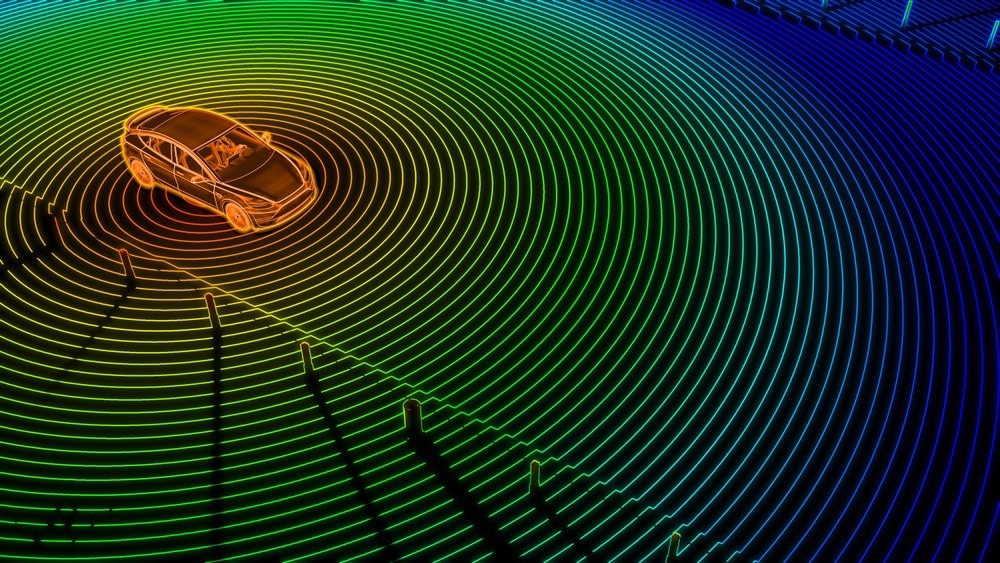In a study published in the journal Optics and Lasers in Engineering, researchers have presented a frequency-modulated continuous-wave light detection and ranging (LiDAR) system based on an H13C14N standard gas cell to measure distance and speed simultaneously.

Study: Simultaneous Measurement Of Distance And Speed Via Frequency-Modulated Continuous-Wave LIDAR system based on H13C14N gas cell. Image Credit: temp-64GTX/Shutterstock.com
The traditional frequency-modulated continuous-wave (FMCW) LiDAR measures target distance using the spectrogram of the beat signal. This study proposes a light detection and ranging system that can measure speed and distance at the same time.
The moving target's distance and speed are calculated as the product of the fitting frequency modulation rate from the fabry perot cavity and the delay time from the H13C14N standard gas cell to avoid spectral broadening. This system has a significant practical utility in the precision manufacturing industry.
Significance of LiDAR System in Length and Speed Measurement
The capacity to simultaneously measure length and speed with high accuracy is crucial for engineering manufacturing and scientific research. It has numerous potential applications in the fabrication of precision instruments, aerospace, and other industries.
The advantages of frequency-modulated continuous-wave LiDARs include their huge temporal bandwidth and good range resolution. FMCW LiDAR can collect target information based on the signal produced by the interference of local wave and echo signals.
Highly accurate distance and speed measurements were a challenge to achieve. As far as practicable, two frequency-modulated continuous-wave laser sources with different scanning orientations were employed to simultaneously measure the distance and speed of the system.
Researchers have researched frequency-modulated continuous-wave sources with opposite scanning orientations to assess the target's vibration or velocity measurement. Because of hardware differences, such as model and component variances, it was impossible to guarantee its sources' concurrent transmission and frequency modulation rate.
Therefore, numerous researchers employed a single laser source to measure the distance and speed of a moving target at the same time. However, direct measurement of the speed of light involves modulation because a single plane wave cannot be located.
Using FMCW LiDAR System to Measure Distance and Time
This study uses a fitting relationship between the phase associated with the beat signal of the measuring optical route and the absorption peak frequency associated with the standard gas cell to determine the distance and speed of the moving target.
The optical path of the measurement system was divided into three sections: the optical measurement path, the optical path of H13C14N gas, and the fabry perot (F-P) cavity.
The beam splitter split the optical measurement path into two parts, one used as the local wave signal, and the other traveled through the circulator and collimator before entering the corner prism fixed to the horizontal guide rail and being picked up by the collimator to produce the echo signal.
The coherent signal's in-phase and quadrature (IQ) components were then directly monitored by balanced detectors after creating a coherent signal using a 90° optical hybrid. The H13C14N cell optical route utilized the absorption spectrum's peak signal to identify the suitable frequency modulation range absorption wavelengths.
Quantitative modeling of the frequency-modulated continuous-wave laser source's frequency modulation rate was performed on these discrete spots to eliminate the laser source's nonlinear influence.
Important Findings of the Study
Based on the H13C14N standard gas cell, the frequency-modulated continuous-wave laser system successfully measured both time and distance at the same time.
Rather than using a fast Fourier transform (FFT) to analyze the beat signals, the distance and speed of a moving object can be calculated from the absorption peak frequency and phase relationship that correlate to the optical path beat signal.
The system's real-time performance and data processing speed have been increased. This technique can reduce nonlinearity and enhance measurement accuracy and stability when equipped with a frequency-modulated continuous-wave laser source.
The average error of the distance measurement was less than 24 μm when the measuring speed was 2 mm/s, 5 mm/s, and 10 mm/s, while the standard deviation did not exceed 163 μm.
When the distance to be measured is approximately 4.5 m, the speed measurement error for speeds ranging from 1 mm/s to 100 mm/s is less than 162 μm/s, reaching a speed resolution of 10 μm/s and a speed measurement range of up to 100 mm/s.
With the advantages of light computation, a simple optical channel, and highly repeatable and accurate measurement outputs, this system has a significant practical value in precision industrial manufacture.
Future researchers can use a combination of 3D galvanometers and other engineering equipment to work on the distance and speed of three-dimensional targets.
Reference
Cheng, X., Liu, J., Zhang, Y., Zhang, F., & Qu, X. (2022). Simultaneous Measurement Of Distance And Speed Via Frequency-Modulated Continuous-Wave LIDAR system based on H13C14N gas cell. Optics and Lasers in Engineering. https://www.sciencedirect.com/science/article/abs/pii/S0143816622002469
Disclaimer: The views expressed here are those of the author expressed in their private capacity and do not necessarily represent the views of AZoM.com Limited T/A AZoNetwork the owner and operator of this website. This disclaimer forms part of the Terms and conditions of use of this website.